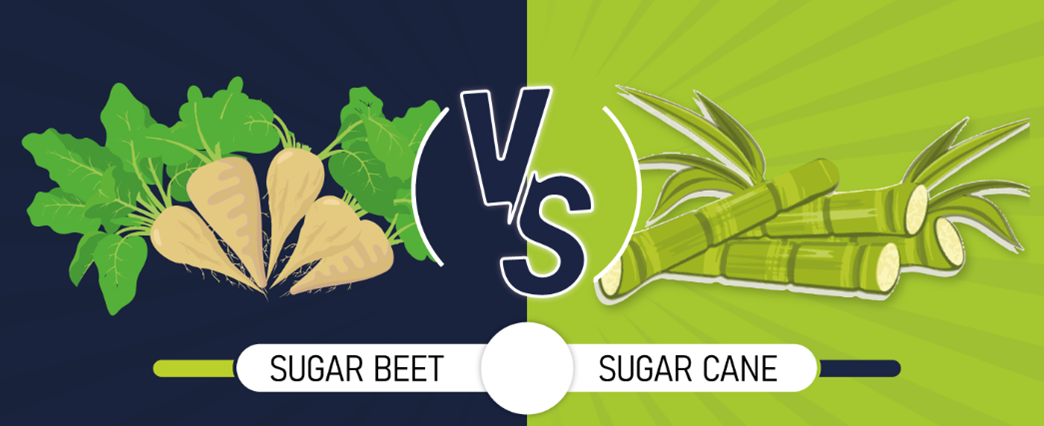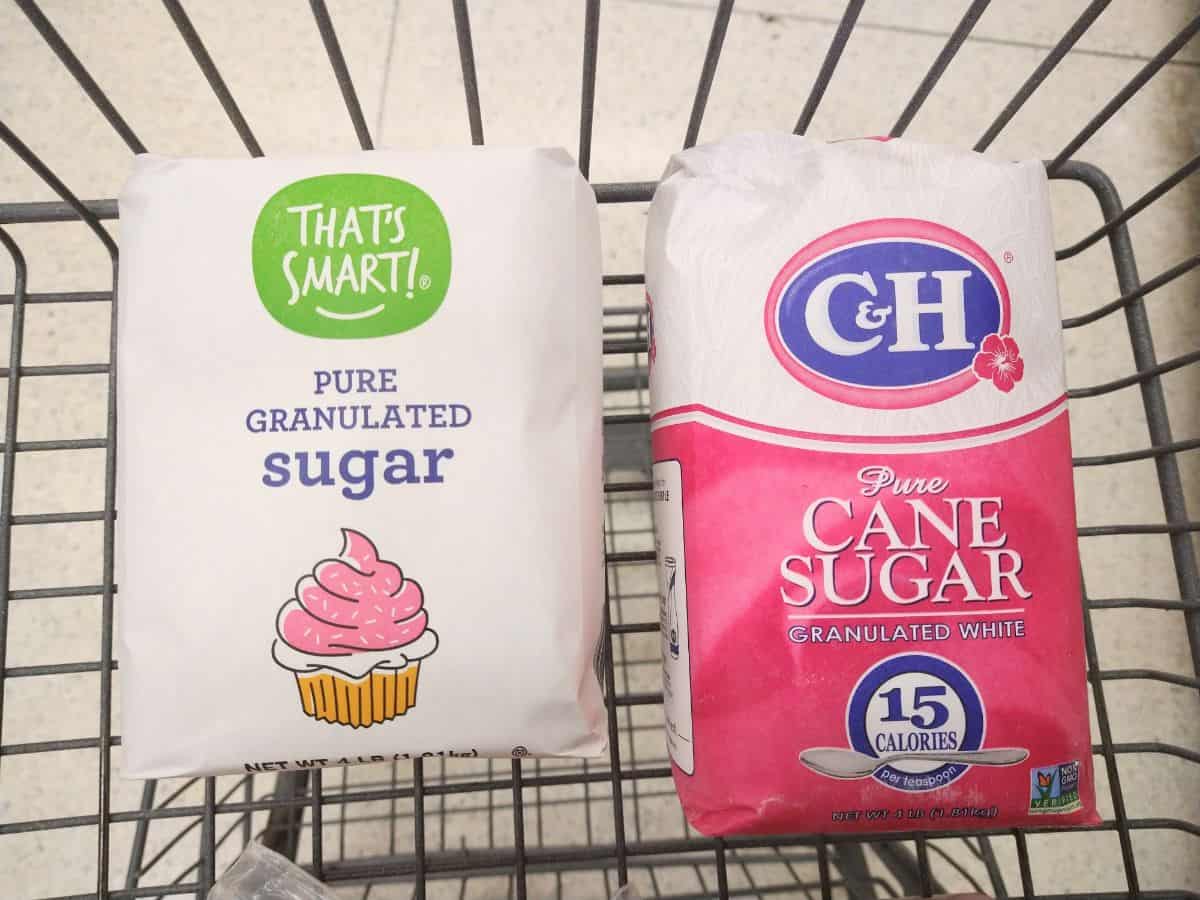Beet Sugar vs Cane: Exploring the Environmental and Economic Benefits
Beet Sugar vs Cane: Exploring the Environmental and Economic Benefits
Blog Article
Beet Sugar Vs Walking Stick: Discover the very best Selection for Your Sweetening Demands
The option between beet sugar and cane sugar expands past plain sweetness; it incorporates factors such as flavor profiles, manufacturing approaches, and nutritional advantages. The earthy undertones of beetroot sugar may not enhance every dish, whereas cane sugar is commonly favored for its tidy taste.
Overview of Beet Sugar
Beet sugar, commonly originated from the sugar beet plant, is regularly used as a key artificial sweetener in different food products. The sugar beet, a biennial plant, thrives in warm climates and is largely cultivated in areas such as Europe and The United States And copyright. beet sugar vs cane. The removal process involves cutting the beetroots and drawing out the juice, which is then detoxified and crystallized to generate granulated sugar
One significant attribute of beetroot sugar is its chemical make-up, which is almost identical to that of walking stick sugar, as both are composed mainly of sucrose. This similarity enables beet sugar to be utilized interchangeably with walking stick sugar in dishes and food production.
Beetroot sugar is additionally noted for its adaptability in various applications, consisting of baking, beverage solution, and confectionery manufacturing. Additionally, the beet sugar market has actually made strides in sustainable practices, with lots of producers applying eco-friendly farming techniques.

Summary of Cane Sugar
Cane sugar, obtained from the sugarcane plant, is one of the most commonly recognized and used sweeteners globally. It is primarily made up of sucrose, a disaccharide that offers a wonderful taste profile necessary for various cooking applications. Walking stick sugar is commonly located in granulated kind however is additionally available as raw sugar, brown sugar, and powdered sugar, each offering distinctive purposes in food preparation and baking.
The farming of sugarcane is popular in subtropical and tropical regions, adding to its prevalent availability. The plant grows in cozy climates, requiring ample sunshine and water for optimum development. Cane sugar is typically valued for its all-natural manufacturing method and minimal handling, which preserves its flavor and dietary residential or commercial properties.
In addition to its cooking usages, walking cane sugar plays a significant function in the food market, working as a chemical, fermentation substratum, and texturizing representative. Its flexibility extends beyond food, locating applications in beverages, confections, and also cosmetics. With a long history and a solid cultural presence, walking stick sugar remains to be a favored selection for customers looking for an all-natural sweetening alternative.
Production Processes Contrasted
When contrasting the manufacturing procedures of beet sugar and walking cane sugar, it ends up being clear that each method reflects the special attributes of its resource product. Beet sugar production starts with gathering sugar beetroots, which are then cleaned, cut, and based on warm water removal to liquify the sugar. The resulting juice goes through filtration via liming and carbonation, complied with by dissipation to focus the juice. Condensation happens, yielding raw sugar, which is then refined to generate the last item.
In contrast, cane sugar manufacturing includes collecting sugarcane stalks, which are crushed to remove juice. This juice see is after that clarified using heat and lime, comparable to the beet procedure. After information, the cane juice is vaporized and crystallized. Nonetheless, the walking stick sugar procedure integrates a longer milling and pressing phase, which assists in drawing out optimum juice from the stalks.
Both procedures emphasize effectiveness, yet the methods highlight differences in tools and power usage. Beet sugar often tends to have a more simple processing path, while walking cane sugar production can be much more intricate because of the coarse nature of the cane stalks. Eventually, these distinctions form the qualities of the sugars created.
Nutritional Profiles and Advantages
Sugar, a staple in lots of diet regimens, differs in dietary accounts and advantages depending on its resource. Both beet sugar and walking stick sugar mainly include sucrose, giving comparable calorie web content-- roughly 4 calories per gram. Subtle distinctions can affect consumer selections and understandings.
Beetroot sugar is stemmed from sugar beetroots, which include percentages of minerals and vitamins, such as potassium and calcium, however these nutrients are present in negligible quantities when consumed in normal quantities. Conversely, walking stick sugar, removed from sugarcane, may use similar trace nutrients, yet the differences are largely trivial and very little in the context of a balanced diet regimen.
One significant facet is the environmental effect of each resource, which can indirectly impact nutritional choices. Beetroot useful site sugar production is typically viewed as more lasting because of reduced water usage contrasted to walking stick sugar farming. Additionally, some individuals like beet sugar due to its non-GMO condition in certain areas, potentially straightening with health-conscious consumer fads.

Flavor Differences and Utilizes
Distinctive taste profiles identify beet sugar and walking stick sugar, influencing their applications in different culinary contexts. Beetroot sugar has a somewhat natural taste, which can be connected to the dirt in which the beetroots are expanded.
In practical terms, beetroot sugar and walking stick sugar can typically be utilized interchangeably in most recipes. Nonetheless, bread cooks and culinary experts commonly lean towards walking cane sugar for its exceptional ability to caramelize, which is important in producing complex flavor profiles in sauces and confections. Furthermore, walking stick sugar is favored in drinks, as its taste liquifies seamlessly, maintaining the integrity of the drink.
Inevitably, the selection between beet and walking cane sugar might come down to individual preference and the details needs of the recipe, with each type offering distinct characteristics that can boost the cooking experience.
Conclusion
In summary, the option in between beetroot sugar and walking cane sugar rests on certain cooking applications and personal wellness factors to consider. While beet sugar offers a somewhat earthy taste and lasting production benefits, cane sugar's cleaner sweet taste is frequently liked in cooking and delicate meals. Examining the production processes, nutritional accounts, and taste distinctions can lead customers in selecting one of the most suitable sweetener for their needs, guaranteeing both taste contentment and positioning with dietary preferences.
Beetroot sugar, generally acquired from the sugar beet plant, is regularly made use of as an essential sweetening agent in numerous food items. Walking cane sugar is generally located in granulated form yet is also readily available as raw sugar, brownish sugar, and powdered sugar, each serving unique functions in cooking and baking.
When comparing the production procedures of beet sugar and cane sugar, it becomes clear that each method mirrors the special attributes of its resource product. Beet sugar production begins with collecting sugar beetroots, which are then cleaned, cut, and subjected to hot water extraction to liquify the sugar. Beetroot sugar often tends to have a much more uncomplicated processing find more information route, while walking cane sugar production can be more complicated due to the coarse nature of the walking cane stalks.
Report this page